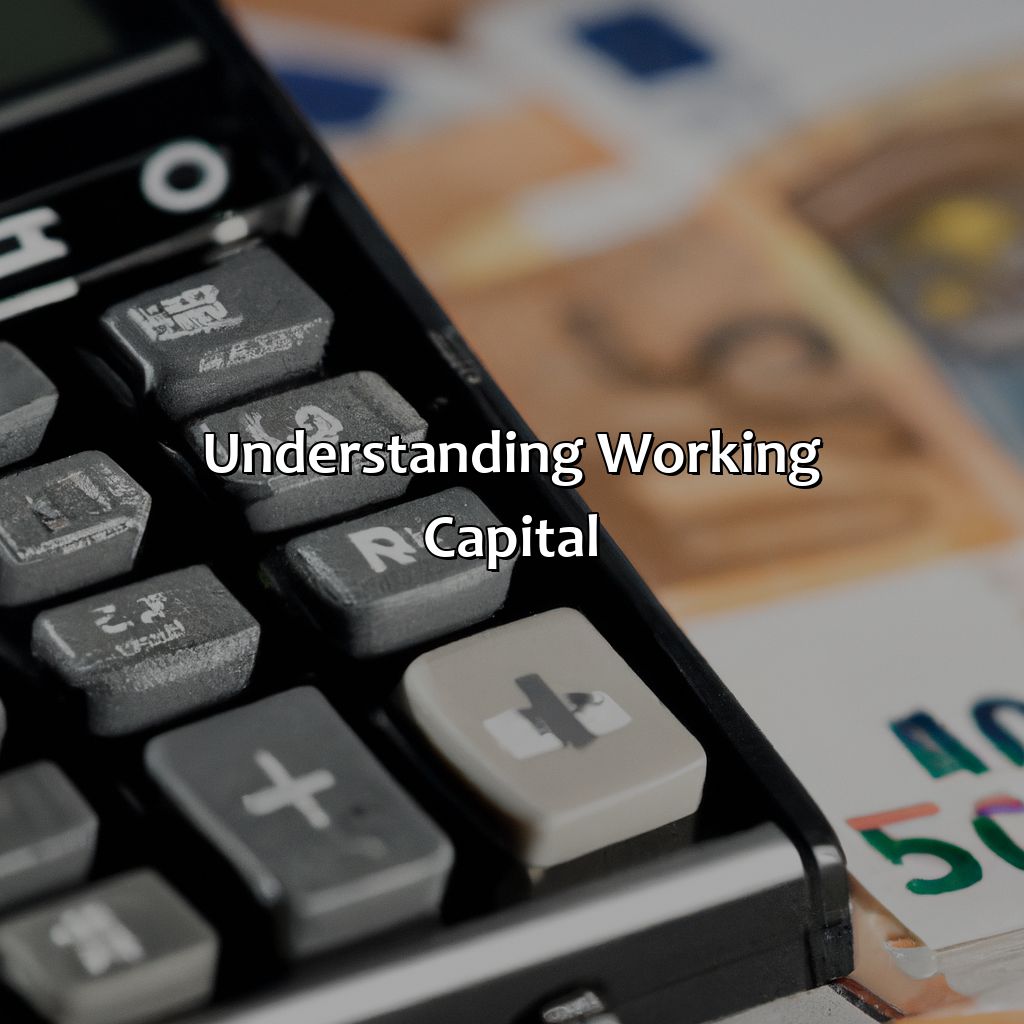How To Calculate Investment In Working Capital?
Key Takeaway:
- Working capital is a crucial aspect of a company’s financial health, and calculating investment in working capital is essential for decision-making and planning.
- The formula for calculating investment in working capital is straightforward: add up the value of a company’s current assets and subtract the value of its current liabilities.
- Factors that affect investment in working capital include seasonal changes, growth plans, industry trends, and economic conditions. It is important to regularly review and adjust investment in working capital to ensure optimal financial performance.
Do you want to get the most out of your working capital investments? It’s essential to understand the basics of investment calculations to control and manage your money. In this article, learn how to calculate investment in working capital and maximize your returns.
Understanding Working Capital
Working Capital: A Professional Understanding
Working capital is an accounting term used to refer to a company’s financial position, representing the difference between its current assets and liabilities. Understanding the concept of working capital is crucial in examining a business’s financial health as it determines its operational efficiency, liquidity, and ability to pay off debts.
In analyzing working capital, it is imperative to delve deeper into the current assets and liabilities of a company. Examples of current assets include cash, accounts receivable, inventories, and short-term investments, while current liabilities include accounts payable, loans, and taxes payable. By calculating the difference between current assets and liabilities, you can determine a business’s liquidity and ability to meet its short-term financial obligations.
One must bear in mind that the optimal working capital level differs depending on the industry, and excess working capital can lead to a reduction in profitability. Therefore, it is crucial to monitor and maintain an optimal level of working capital by managing inventories, negotiating terms with suppliers, and pursuing timely debt collection procedures.

Image credits: retiregenz.com by David Woodhock
Importance of calculating investment in working capital
Businesses must understand the significance of evaluating their investment in the working capital effectively. This calculation helps a business to assess its cash flow that is tied up with inventory, accounts receivable, and accounts payable. By determining the working capital requirement, businesses can avoid underinvestment or overinvestment in working capital. A precise calculation empowers businesses to manage the daily operational expenses, and respond instantaneously to new opportunities.
An accurate assessment of the investment in working capital is an indispensable element in financial management. Managing capital investments is significant in the current dynamic business environment. A business must have adequate working capital to stay financially competitive and operational. This calculation assists in determining the expenditure required for the daily business operations, cash inflows, and outflows. Businesses can anticipate future cash flows and plan strategically to avoid financial pitfalls.
Investment in working capital computation must consider the cash cycle, which is the summation of the time it takes to convert inventory into accounts receivable, and the time it takes to collect from accounts receivable. This calculation establishes an optimum level of working capital and eliminates excess investment needs. A business must account for changing market conditions and adjust the working capital accordingly to avoid liquidity issues.
Pro Tip: A well-executed working capital investment calculation enhances the business’s operational efficiency and improves profitability. Regular assessment of investment in working capital is essential for cost-effective and strategic planning.

Image credits: retiregenz.com by David Arnold
Formula for calculating investment in working capital
To calculate the investment in working capital, the formula used is the difference between the current assets and current liabilities. This calculation helps a business determine the amount of capital required for day-to-day operations and enables them to make informed decisions about their financial goals.
For a better understanding, the formula for calculating the investment in working capital can be presented through a table with appropriate columns. The table should have the headings “Current Assets” and “Current Liabilities”, with the corresponding amounts entered in the rows. The difference between these two columns will give the investment in working capital.
Some other important factors to consider when calculating investment in working capital include cash flow, inventory turnover, and accounts receivable.
To illustrate the importance of this formula, consider the story of a small business that struggled with cash flow due to poor management of their working capital. By implementing proper procedures, such as monitoring inventory levels and improving collection efforts on outstanding accounts, the business was able to increase their investment in working capital, resulting in improved cash flow and overall financial stability.

Image credits: retiregenz.com by David Jones
Example of calculating investment in working capital
In order to gauge the amount of working capital investment your company requires, you must employ a specific calculation. Here is an example of how to perform said calculation using actual data:
| Type of Expense | Amount |
|---|---|
| Inventory | $50,000 |
| Accounts Receivable | $20,000 |
| Cash | $10,000 |
| Trade Payables | $15,000 |
| Accrued Expenses | $5,000 |
| Prepaid Expenses | $2,000 |
To calculate the investment in working capital, add up the amounts in the “Inventory,” “Accounts Receivable,” “Cash,” “Trade Payables,” “Accrued Expenses,” and “Prepaid Expenses” columns. In this case, the total is $82,000.
It’s important to note that the working capital investment varies based on the nature of the business, which necessitates an evaluation of unique factors.
A company in the textile industry was experiencing a deficit in working capital, so they scrutinized their expenses and discerned the source of the issue was primarily the slow turnover of inventory. They reduced the amount of inventory they kept on hand, freeing up capital to allocate elsewhere, and ultimately solved the issue.

Image credits: retiregenz.com by Harry Duncun
Factors affecting investment in working capital
Working capital investment is crucial for companies to operate efficiently. Understanding the key drivers behind the amount invested can lead to optimal use of funds.
There are several factors that directly impact working capital investment. These include the type of industry, economic conditions, business cycle, and the company’s growth strategy. The industry type and business cycle can determine the amount of inventory, accounts receivable, and payables required. In contrast, economic conditions can affect the company’s access to finance. Additionally, companies with a focus on growing their market share may need to invest heavily in working capital.
The management of working capital investment is a critical component of company performance management. Effective management helps companies minimize risks and maximize their financial performance. To achieve this, companies need to optimize key working capital elements such as inventory management, supply chain management, and accounts receivable and payable management.
In the past, companies considered working capital investment as a necessary evil. However, modern companies see it as a strategic and critical component of their financial performance management. Proper management of working capital not only assures short-term liquidity but also strengthens the company’s financial position for the long term.

Image credits: retiregenz.com by James Woodhock
Some Facts About How To Calculate Investment In Working Capital:
- ✅ Working capital is the difference between current assets and current liabilities. (Source: Accounting Tools)
- ✅ Closely managing working capital is crucial for businesses to maintain liquidity and support operations. (Source: Investopedia)
- ✅ It is important to regularly review and adjust working capital levels to ensure optimal business performance. (Source: Entrepreneur)
- ✅ Calculating working capital involves analyzing key financial statements such as the balance sheet and cash flow statement. (Source: QuickBooks)
- ✅ There are various ratios and formulas used to calculate working capital, such as the current ratio and the quick ratio. (Source: The Balance Small Business)
FAQs about How To Calculate Investment In Working Capital?
Q: What is working capital?
A: Working capital is the amount of money available to a company for day-to-day operations. It is calculated by subtracting current liabilities from current assets.
Q: How to calculate investment in working capital?
A: To calculate investment in working capital, subtract the current liabilities from the current assets at two different points in time, such as at the beginning and end of a month or year. Then, subtract the earlier period’s working capital from the later period’s working capital to determine the investment in working capital.
Q: What are current liabilities?
A: Current liabilities are the debts and obligations that a company must pay within one year. Examples include accounts payable, salaries and wages payable, and taxes owed.
Q: What are current assets?
A: Current assets are assets that a company expects to convert into cash within one year. Examples include cash on hand, accounts receivable, and inventory.
Q: Why is investment in working capital important?
A: Investment in working capital is important because it affects a company’s ability to pay its bills and meet its financial obligations. It also impacts a company’s profitability and cash flow.
Q: How can a company lower its investment in working capital?
A: A company can lower its investment in working capital by managing its inventory levels, collecting receivables more quickly, and extending payment terms with suppliers. It can also reduce expenses and increase revenue.
